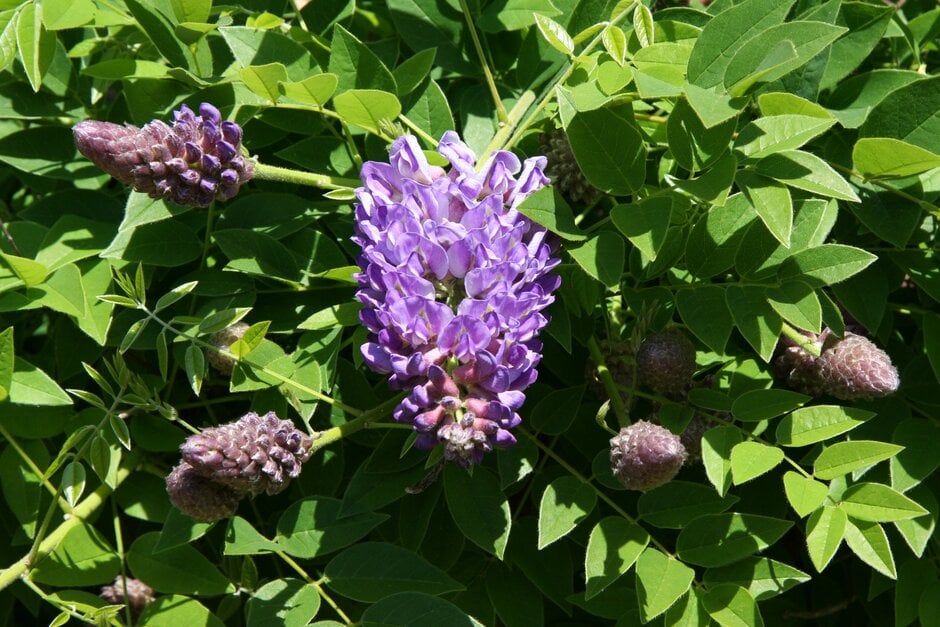Wisteria frutescens 'Longwood Purple'
American wisteria 'Longwood Purple'
A vigorous twining climber about 6-8m or more tall, with smooth, shiny dark green leaves composed of leaflets, and lightly musk-scented, short, dense flower racemes, composed of violet flower petals, with white centres and greenish-yellow eyes, produced late in summer, followed by shiny brown seed heads
Size
Ultimate height
4–8 metresTime to ultimate height
10–20 yearsUltimate spread
2.5–4 metresGrowing conditions
Moisture
Moist but well–drainedpH
Acid, Alkaline, NeutralColour & scent
| Stem | Flower | Foliage | Fruit | |
| Spring | Green | |||
|---|---|---|---|---|
| Summer | Purple White Green | Green | ||
| Autumn | Yellow | Brown | ||
| Winter |
Position
- Full sun
- Partial shade
Aspect
South–facing or West–facing or East–facing
Exposure
Sheltered Hardiness
H5Botanical details
- Family
- Fabaceae
- Native to GB / Ireland
- No
- Foliage
- Deciduous
- Habit
- Climbing
- Potentially harmful
- Harmful if eaten. Wear gloves and other protective equipment when handling. Pets: Harmful if eaten - for further information and contact numbers regarding pets, see the HTA guide to potentially harmful plants
- Genus
Wisteria are vigorous woody climbers with twining stems bearing pinnate leaves and long pendulous racemes of fragrant pea-like flowers in spring and early summer
- Name status
Accepted
How to grow
Cultivation
Can be grown informally through large tree or trained more formally against a house wall. Will grow in most soils that are moist but well-drained in sun or part shade. See wisteria cultivation for more advice
Propagation
Propagate by layering, softwood cuttings, hardwood cuttings or grafting
Suggested planting locations and garden types
- City and courtyard gardens
- Coastal
- Cottage and informal garden
- Climber and wall shrubs
- Hedging and screens
- Wall side borders
Pruning
Prune twice a year for best results, see pruning wisteria for detailed advice
Pests
May be susceptible to aphids, glasshouse red spider mite, and scale insects including wisteria scale
Diseases
May be susceptible to honey fungus (rarely), phytophthora root rot, coral spot, fungal leaf spot, virus diseases, and powdery mildews
Get involved
The Royal Horticultural Society is the UK’s leading gardening charity. We aim to enrich everyone’s life through plants, and make the UK a greener and more beautiful place.

